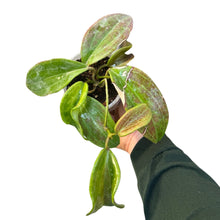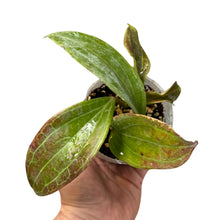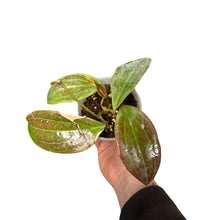Hoya merrillii is part of the Apocynaceae family and it’s native to the Philippines where it grows as an epiphyte in the wet tropical biome. It was originally found at low altitude on trees on Mindoro Island but was later found to be far more widespread. Hoya merrillii is part of the Hoya pottsii complex and is often mistaken for Hoya quinquenervia. Leaves are ovate to elliptic with prominent veins, an acuminate apex and a convex base. When exposed to bright light conditions the leaves turn a beautiful shade of red.
Genus name is new Latin, named after Thomas Hoy ( c. 1750– c. 1821), English gardener. Specific epithet honours its’ collector E.D. Merrill.
The picture shown is an example of what's in stock. You will receive a plant as close to the picture and description as possible.
Light: Bright indirect light, meaning the plant sees the sun for 0-4 hours per day - this could be through trees or a translucent curtain, it’s important for the plant to see the sky in order to thrive. An east-facing window is usually a good spot. This plant will sunstress when exposed to direct light.
Water: Allow the majority of the mix to dry out as the mix is traditionally quite chunky, water will usually flow through quite easily. Be sure to thoroughly moisten the substrate.
Potting mix: Our potting mix would be ideal with some added coco chips.
Fertilising: Feed your plant every few waterings during the growing season or when you observe active growth. You can dilute fertiliser to half the recommended amount but never add more.
Temperature: 15-35°C.
Humidity Average humidity is fine for this plant, but I would recommend 60% and above to get the most out of your plant.
Hoya aren’t considered toxic, however, they may make your pet or child vomit if ingested, keep out of reach just to be safe.





